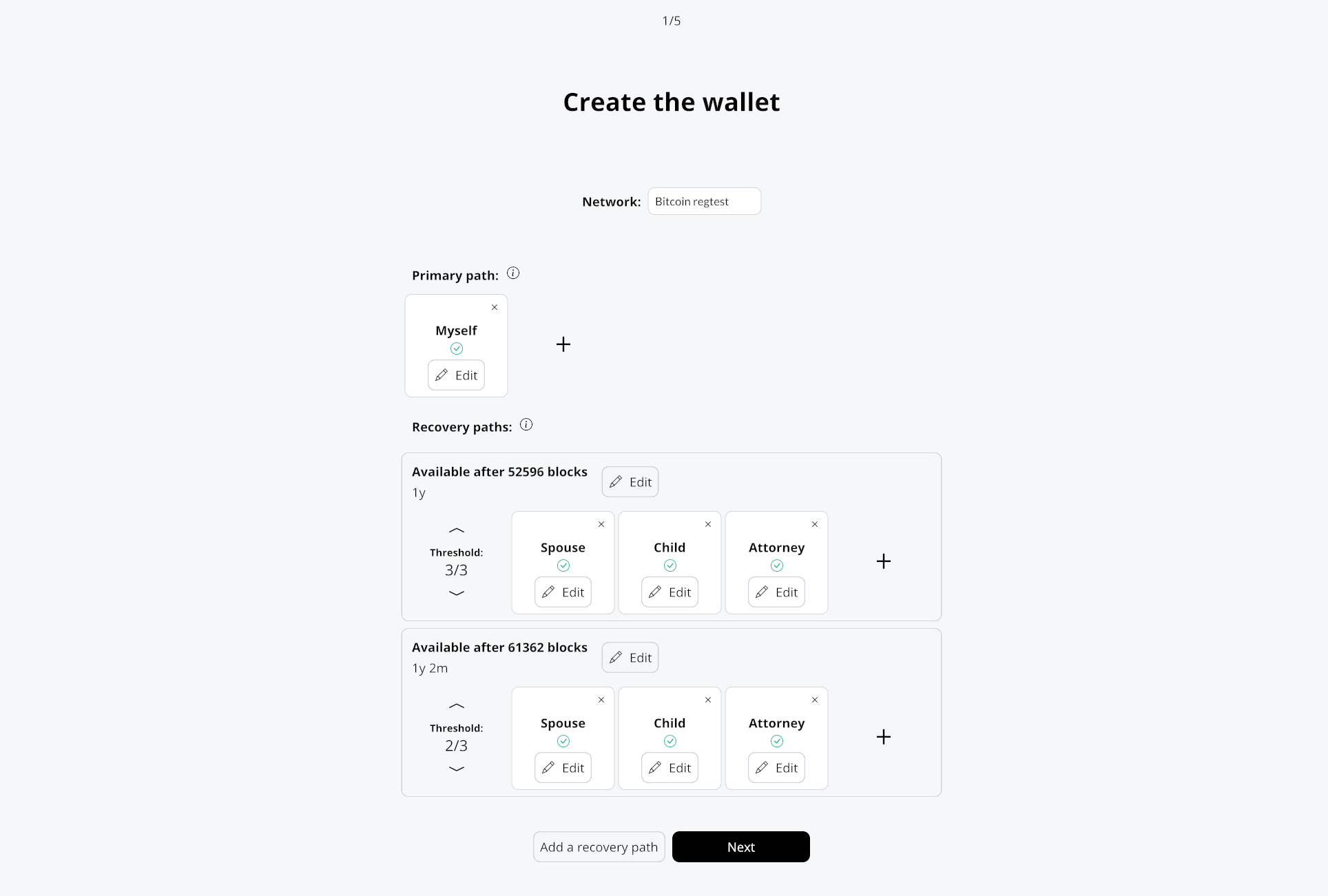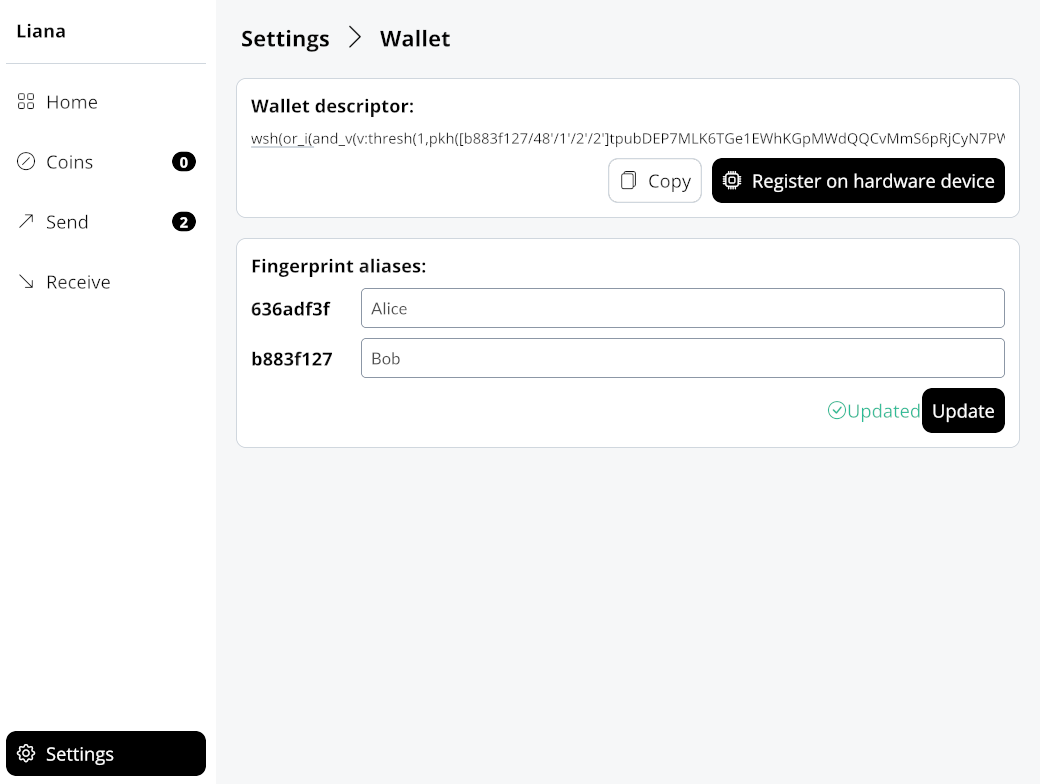
We just tagged the fourth release of Liana. This release makes it much easier to use the Graphical User Interface, and allows one to configure more than one recovery path when creating a new wallet.
Multiple recovery paths
The 0.4 version introduces the possibility to configure additional timelocked recovery paths. For
instance, in previous versions of Liana you could say:
let my funds only be spendable by myself for a year, and after a year has passed without them moving let them be spendable by my spouse and children along with an attorney.
Starting from now you can have a policy that gets rid of the lawyer eventually, while still having them for some time. This makes it so your heirs can still benefit from the assistance of the lawyer (or whatever other third party that would guide them in the recovery process), without having to trust them entirely:
let my funds only be spendable by myself for a year, and if they don’t move for a year let them be spendable by my spouse and children along with an attorney. After a year and three months without moving, let them be spendable by my family alone.
This way the attorney can’t rug-pull your heirs. Most likely the family would still use the expertise of the third party, but the mere existence of a later recovery path that gets rid of them makes for a check on their power in this situation.
For businesses and more advanced users the possibility of having multiple timelocked recovery path also unleashes the full potential of the decaying multisigs discussed in our previous blog post. You can progressively add keys or decrease the threshold of keys required to spend as time passes without funds moving. On the flip side however each new recovery path linearly increases the size of your script, until we switch to Taproot.
Usability improvements
If you’ve used Liana with a Ledger signing device, you probably know you have to “register” the Liana wallet descriptor on the Ledger. It’s sometimes useful to register it again after the creation of the wallet, but it was previously only possible to do so via the installer. This release makes it possible to register the descriptor on any connected signing device from the settings.
The same goes for aliases: we let you label a signer, which will later be displayed in place of the master xpub’s fingerprint where a signer needs to be identified (for instance when signing, or when displaying who signed a PSBT). But it was only possible to set these aliases when creating a new wallet. This made it impossible to update them or to have them altogether if you imported a descriptor. It is now possible to update the alias of each signer in the settings.

There are many more small adjustments and features in this release that will make the life of a user of the wallet easier. Checkout the full list in the release notes!
Contributions
Remember that Liana is an Open Source project, and fully structured as such. All our discussions happen or are reported in public on the Github repository.
If you’d like to contribute or give feedback, feel free to chime in!
We’ve got plenty of “Good first issues” opened that
should be quite accessible to tackle (but contributions outside of those are of course also
welcome!). Have a look at our
CONTRIBUTING.md for some
guidelines.
Non-developer contributions are welcome too. For instance feedback, documentation improvements or feature requests and discussions.
